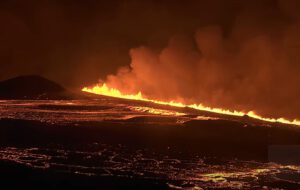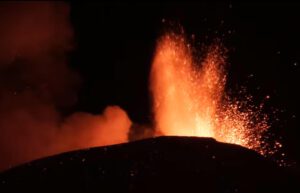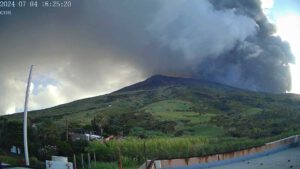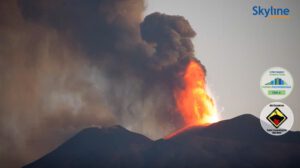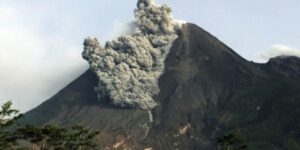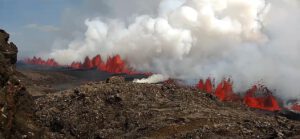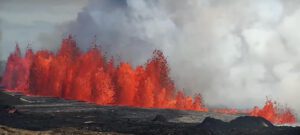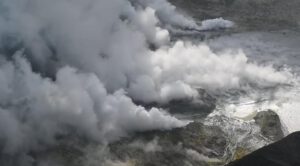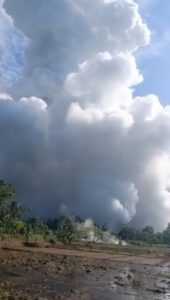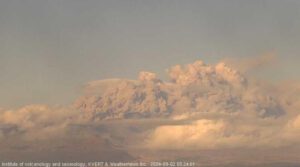 The Shiveluch volcano on Kamchatka remains active, emitting large quantities of volcanic ash from the dome in the old part of the volcano. According to a report from the VAAC Tokyo, the ash reaches an altitude of 5,800 meters above sea level and is drifting eastward. A photo taken yesterday shows a dense ash cloud being pushed down by a strong storm and spreading flatly over the volcano. The well-developed ash cloud indicates intense volcanic activity. Notably, the ash is not coming from the lava dome of the young Shiveluch but from the dome in the old part of the volcano. This area only became active again after the major eruption last April. A new dome began to grow on the edge of the old dome, known as Karan, initially named Karan-1. Recently, in honor of the 300th anniversary of the Russian Academy of Sciences, Karan-1 was renamed and now bears the somewhat cumbersome name “300 years of RAS.”
The Shiveluch volcano on Kamchatka remains active, emitting large quantities of volcanic ash from the dome in the old part of the volcano. According to a report from the VAAC Tokyo, the ash reaches an altitude of 5,800 meters above sea level and is drifting eastward. A photo taken yesterday shows a dense ash cloud being pushed down by a strong storm and spreading flatly over the volcano. The well-developed ash cloud indicates intense volcanic activity. Notably, the ash is not coming from the lava dome of the young Shiveluch but from the dome in the old part of the volcano. This area only became active again after the major eruption last April. A new dome began to grow on the edge of the old dome, known as Karan, initially named Karan-1. Recently, in honor of the 300th anniversary of the Russian Academy of Sciences, Karan-1 was renamed and now bears the somewhat cumbersome name “300 years of RAS.”
Shiveluch is one of the most active and largest volcanoes on the Kamchatka Peninsula in Russia. It is part of the Pacific Ring of Fire, a region known for its frequent earthquakes and volcanic eruptions.
